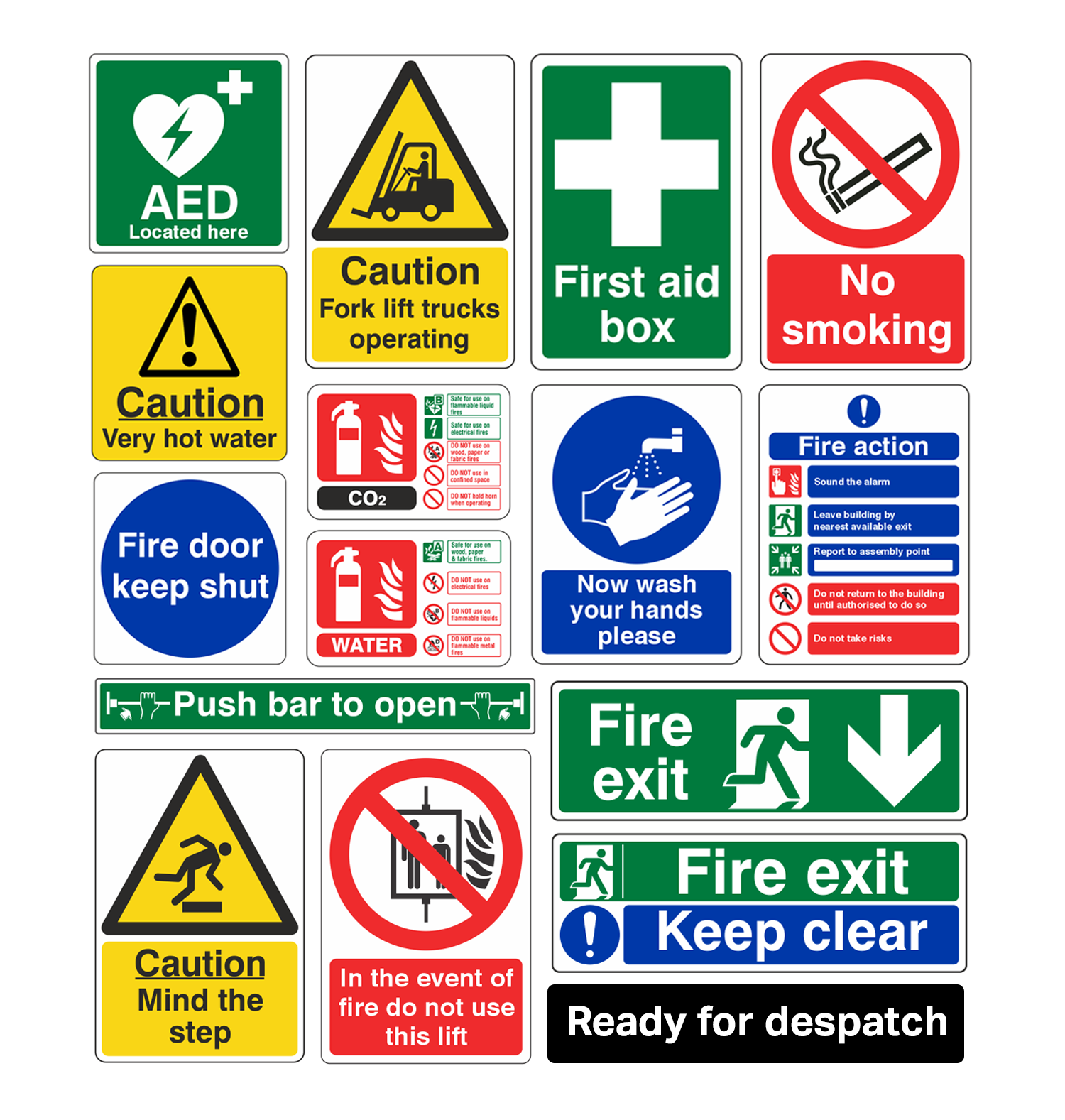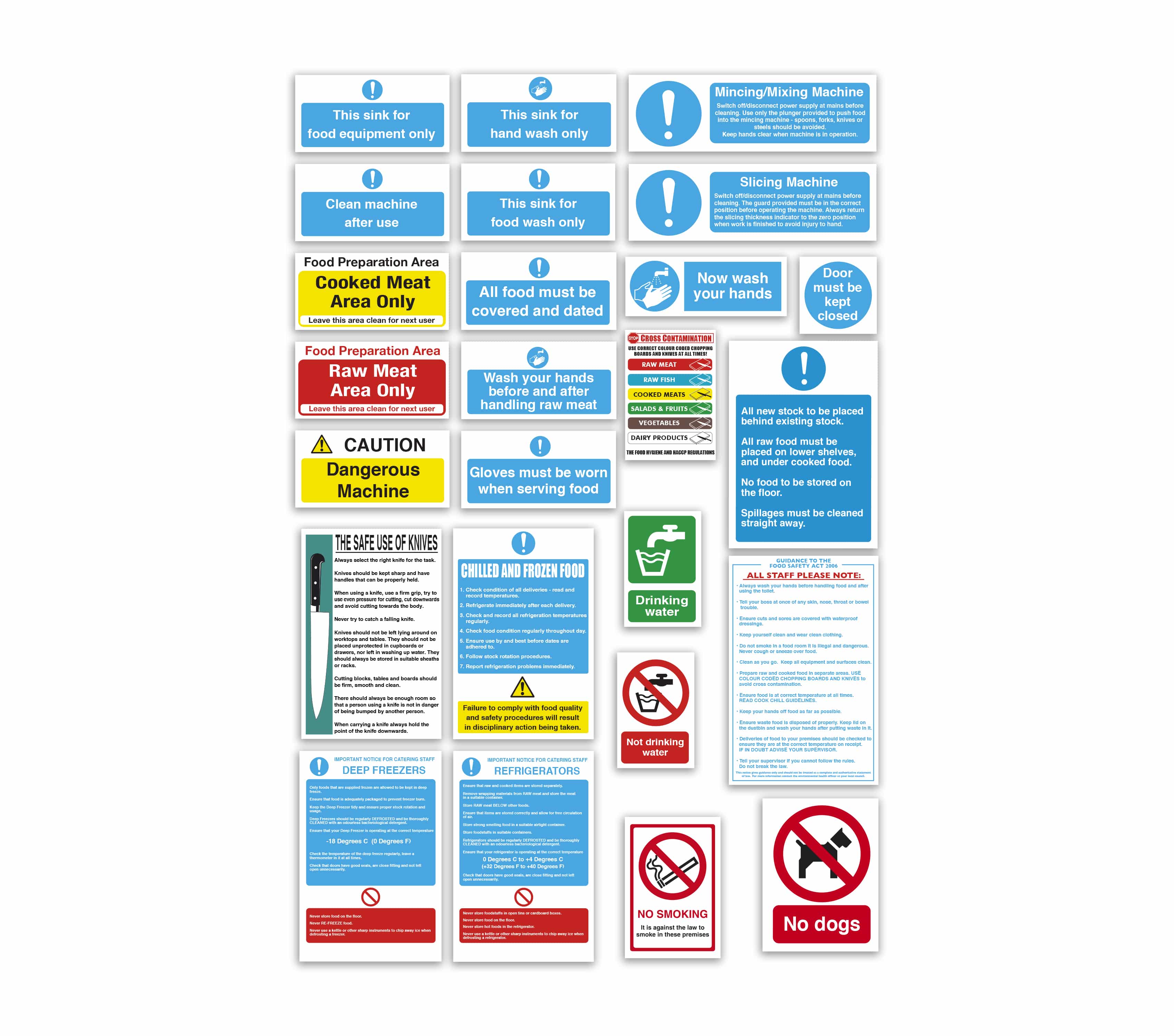Reliable Safety Signage Strategies: Maximizing Recognition and Compliance
Kinds Of Safety Indications You Need to Know for Ultimate Defense

Indication
Indication play a vital role in making sure safety and security by communicating vital information concerning potential dangers. These signs are essential in different settings, including workplaces, public areas, and roadways, where they notify people to threats that may not be right away noticeable. Common examples of indication include those indicating unsafe surfaces, electrical dangers, and reduced overhead clearance.

It is critical for companies to regularly evaluate the placement and exposure of warning indications to ensure they successfully interact dangers. Training employees and the public on the definitions of these indications additionally strengthens their importance in advertising safety and security culture - Safety Signs.
Restriction Indicators
Prohibition signs function as essential indications made to connect constraints and habits that must be prevented in particular locations. These indications are important for making sure safety and security and conformity, assisting to avoid accidents and minimize threats in different atmospheres, including workplaces, public locations, and building websites. Commonly defined by a vibrant red circle with a diagonal line, restriction indications share a clear message that specific activities are not permitted.
Usual examples include indicators that restrict smoking, consuming, or entry right into restricted areas. The effectiveness of these indications depends upon their exposure and simpleness, making it simple for people to understand the designated message at a glance. Appropriate placement is necessary; they should be found in high-traffic locations and near the points of prospective offense to take full advantage of recognition.
Prohibition indications not just protect people yet also maintain business policies and legal demands (Health and Safety Signs). Their usage promotes a society of safety and security and respect for policies, adding to a more secure environment for everyone. Consequently, understanding and adhering to the regulations of restriction indicators is essential to guarantee compliance and promote general security in any kind of given area.
Necessary Indicators
Required signs are essential components of safety and security interaction, made to educate people of activities that should be taken to ensure safety and security and conformity in different atmospheres. These signs are characterized by their distinct blue history and white icons or message, sharing clear guidelines that must be followed.
Common instances of compulsory indicators include directives such as "Put On Personal Protective Tools" (PPE), "Usage Hearing Protection," and "Have To Clean anchor Hands." Each of these indications offers a certain function, targeting behaviors that boost security and alleviate dangers in workplaces, public facilities, and construction sites.
The go to my blog value of required indicators can not be overemphasized; they not only help in stopping mishaps and injuries yet likewise make certain adherence to business policies and lawful policies. In environments where hazards are prevalent, the visibility of these signs enhances a culture of security and liability among all people.
To maximize their efficiency, mandatory indications should be positioned in visible locations, guaranteeing they are easily seen and recognized by everybody around - Safety Signs. On a regular basis inspecting and keeping these signs is also crucial to guarantee their clarity and presence, thus advertising a safer setting for all
Emergency Info Indicators
Emergency information indications play a crucial function in assisting people during crises, supplying essential info that can aid ensure security and assist in reliable feedback actions. These indications are created to provide clear and prompt guidelines in emergency situation scenarios, such as fires, chemical spills, or all-natural disasters.
Usually, emergency situation information signs include essential information such as evacuation paths, emergency situation get in touch with numbers, places of very first help stations, and instructions for utilizing emergency devices, such as fire extinguishers or defibrillators. Their layout often features bold colors, high contrast, and widely recognizable symbols to ensure presence and comprehension even in high-stress situations.
It is crucial for link companies to frequently review and upgrade their emergency details indications to reflect any kind of changes in structure designs, emergency situation procedures, or contact info. Proper positioning of these signs is similarly important; they must be positioned in locations with high foot traffic and at eye degree to ensure that they are quickly visible during emergency situations.
Standard and Directional Signs
Standard and directional signs are necessary tools for navigation within numerous environments, making certain that individuals can locate their way effectively and securely. These indications offer an important function in both public and personal spaces, including offices, hospitals, institutions, and entertainment areas.
Normally including arrows, signs, or message, standard and directional signs offer clear guidelines on browsing complex layouts. They assist stop complication and minimize the danger of mishaps by routing people in the direction of exits, washrooms, and certain sights. Reliable signage is developed to be quickly identifiable, commonly making use of standardized colors and forms to convey information quickly.
Along with helping navigating, these indicators play an essential duty in emergency situation readiness. Throughout crises, well-placed directional signs can lead individuals to safety, reducing panic and guaranteeing orderly evacuations. Regular maintenance and updates to these indicators are crucial, as changing layouts or brand-new threats might require modified assistance.
Conclusion

Understanding the distinctions between warning indications, prohibition indicators, required signs, and emergency information indicators can substantially improve total security awareness.Caution signs play a critical function in making certain safety and security by sharing vital information about potential risks. These indications are crucial for ensuring safety and security and conformity, assisting to protect against mishaps and reduce threats in different environments, consisting of offices, public areas, and building and construction sites. Throughout situations, well-placed directional signs can lead people to safety and security, decreasing panic and making certain orderly emptyings. Warning signs, restriction indications, necessary indications, and emergency details and directional indications each serve distinct purposes in communicating essential information concerning dangers, constraints, safety actions, and navigational advice.